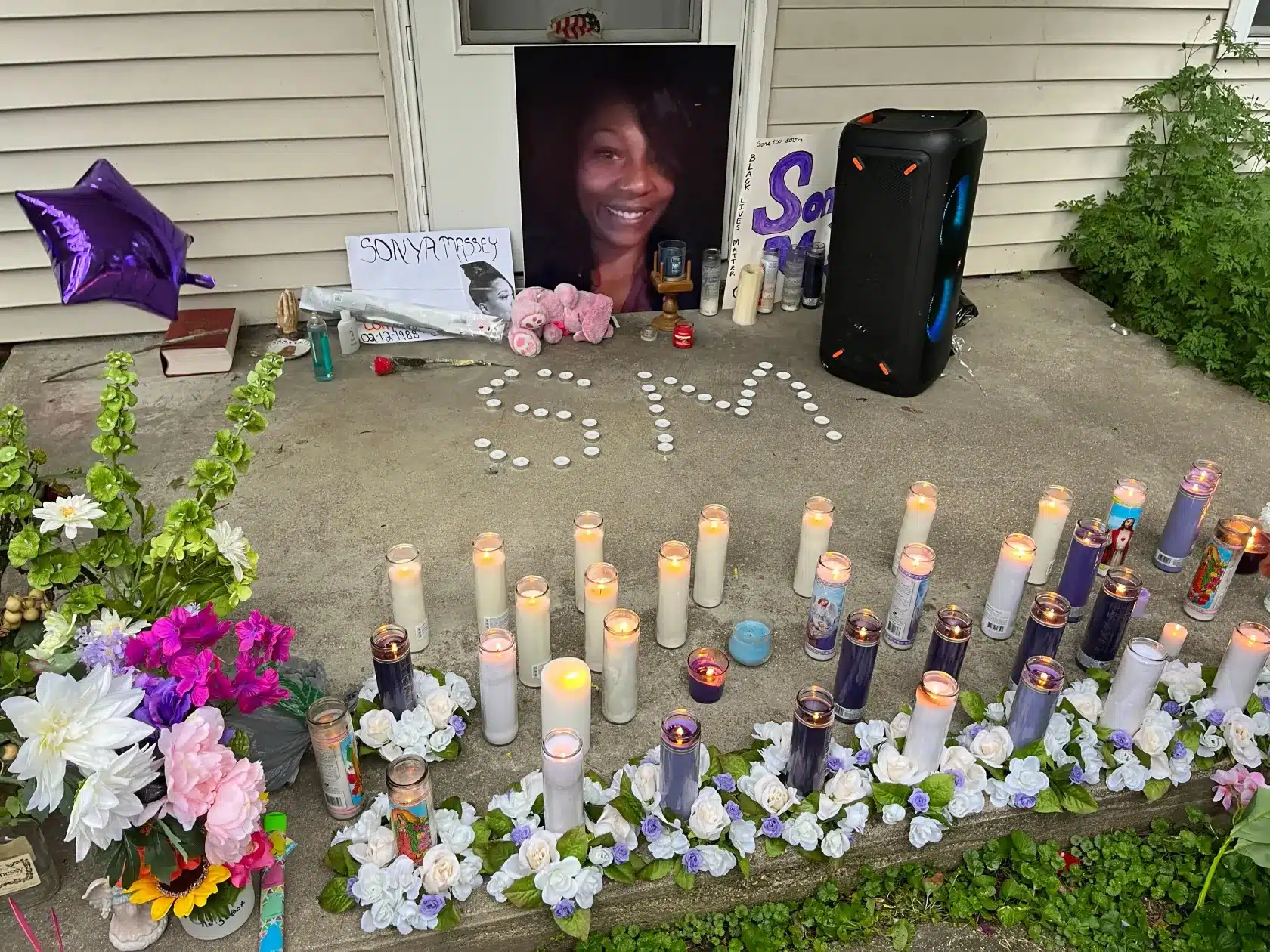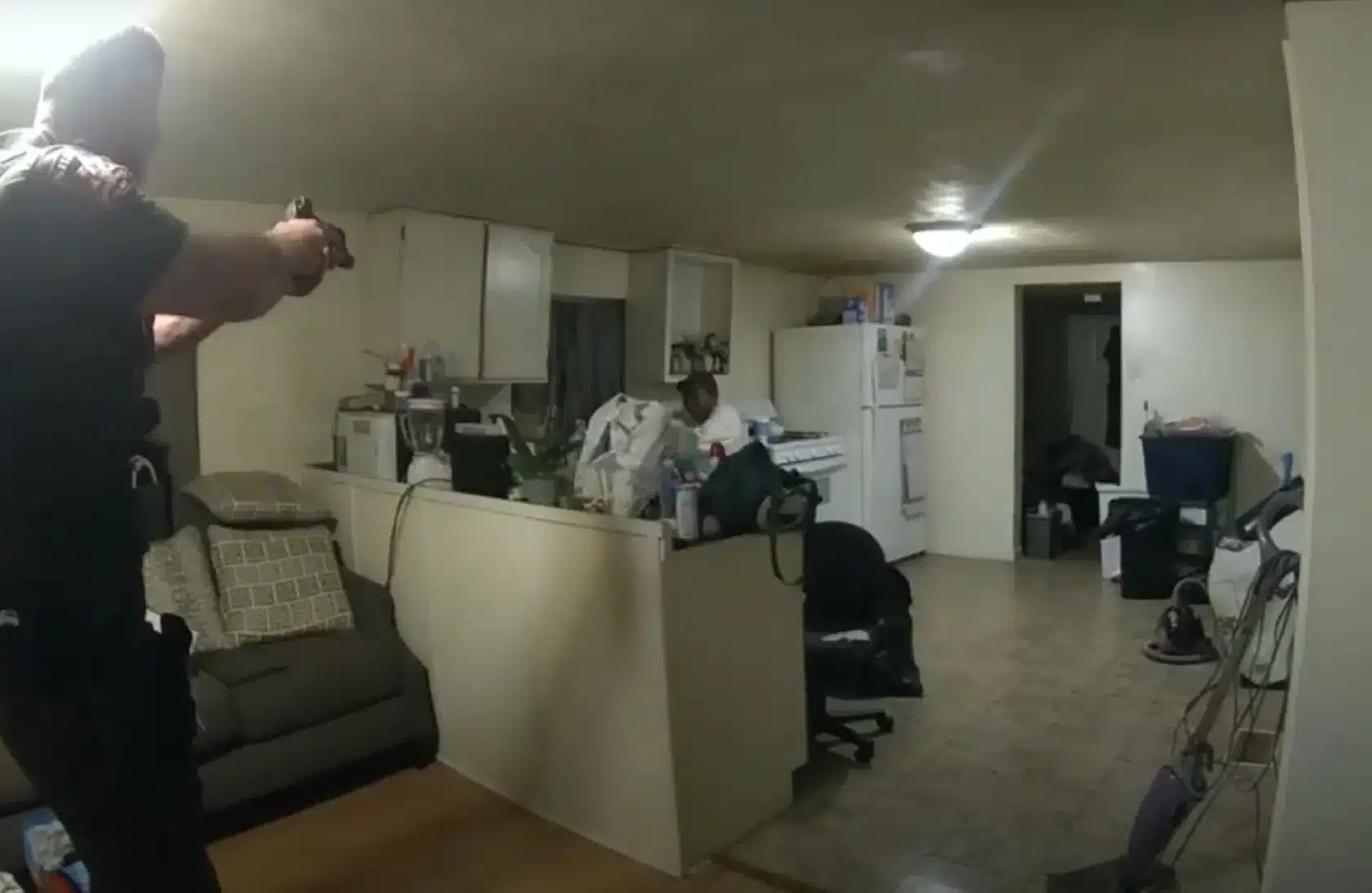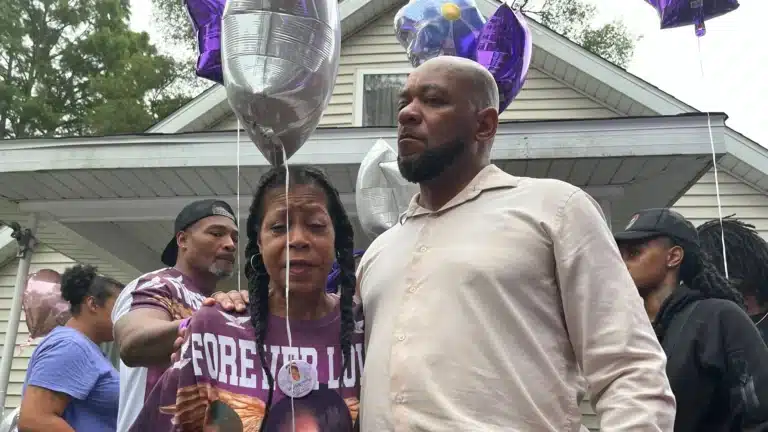Massey’s death at the hands of police has prompted calls for change, but would those changes have been enough to prevent her killing?
Sonya Massey, 36, was seeking mental health treatment up until the day she was shot and killed by former Sangamon County Sheriff’s Deputy Sean Grayson.
County records show 911 calls from Sonya Massey and her mother, Donna Massey. In one call, Donna Massey tells an operator that her daughter has paranoid schizophrenia but that she’s not dangerous. She begs the dispatcher to not send “combative policemen that are prejudiced,” because she is worried “they will kill her.”
Massey’s death at the hands of law enforcement has sparked calls for changes to how emergency mental health calls are handled.
Now, change is coming to the state capital. Sangamon County will be one of the first in Illinois to pilot a statewide plan to send clinicians to mental health crises instead of police. However, even proponents of the change aren’t sure it would have prevented what happened to Massey, raising questions about how best to work with people in the midst of mental health emergencies.

County records show that Sonya Massey made a 911 call on July 5, a few hours after her mother had called 911 to say her daughter was in trouble but not dangerous. A distressed Massey told the dispatcher that her neighbor hit her with a brick, before hanging up. Later, Massey went to HSHS St. John’s Hospital in Springfield, where she told a sheriff’s deputy that her neighbor broke the driver’s side window of her car with a brick.
According to the deputy’s narrative, Massey was at the hospital to seek treatment for her “mental state” and was experiencing some “10-96” issues, which is Illinois Police Code shorthand for “mental subject.” She had also recently been released from a mental health facility near East St. Louis.
In addition to the 911 calls, Donna Massey had first tried calling Springfield Memorial Hospital’s Behavioral Health Unit on July 5, but they told her to call police instead. The hospital operates a mobile team that will send trained mental health professionals to de-escalate a crisis situation. According to Springfield police records, Sonya Massey had seen the team three times in the prior two weeks.
None of this information, however, was relayed to Grayson and the other responding officer the night Massey was killed. Chris Mueller, who oversees Sangamon County’s 911 dispatch center, said that’s because researching each call history takes time, and when there’s an emergency, time is of the essence.
“We don’t make a determination at dispatch as to who might be having a behavioral crisis and who’s not,” Mueller said. “We send somebody, boots on the ground, to the scene to assess.”
Mueller said the protocol has always been to send law enforcement officers to de-escalate situations, such as talking someone down from attempting suicide. Springfield Memorial Hospital’s Behavioral Health Unit’s mobile crisis response team isn’t dispatched through 911 — callers have to call the hospital directly.
It’s not an ideal setup, according to crisis intervention experts. But it’s changing soon.
A state law passed in 2021 is being rolled out at the end of this year, after its start date was pushed back multiple times. The Community Emergency Services and Supports Act, or CESSA, requires emergency responders to refer mental health calls to a new service that can dispatch a team of trained clinicians instead of police.
Mueller’s 911 center will be one of the first to test out this new system.
“I anticipate that … we’re going to be more frontline,” Mueller said, “determining ‘Hey, this maybe needs a behavioral health [response]’ right off the bat.”
The measure was pushed by State Representative Kelly Cassidy, D-Chicago, who worked with disability rights nonprofit Access Living. After hearing about Massey’s death, Cassidy said she’s anxious to get these systems up and running.
“I’m crushed that another person has died as a result of the absence of these resources,” Cassidy said.
Regional advisory committees, made up of emergency dispatchers, law enforcement personnel and mental health professionals, have been meeting every month or so to discuss and prepare for implementation of the new law.
Dr. Lorrie Rickman Jones is in charge of training mobile crisis response teams, plus 911 and 988 suicide helpline operators, for the advisory committee based in Chicago. She’s a professor at the Jane Addams College of Social Work at the University of Illinois Chicago and has worked as a clinician for many years.
“We know that there have been some unfortunate outcomes when law enforcement gets involved in trying to manage a person with a behavioral health crisis,” Rickman Jones said. “Making [these] changes in the system can mitigate some of that.”

But would CESSA have prevented Massey’s death? Rickman Jones isn’t too sure.
“This person called about a prowler. The response when you call with a prowler at your house is to get law enforcement,” Rickman Jones said.
However, Grayson’s body camera footage shows him and his partner entering Massey’s home after clearing the scene of any potential threats. Rickman Jones said at that point, the officers should have had no problem involving the local hospital’s mobile crisis response team.
“The CESSA law gives us a road map to do some of that work,” Rickman Jones said. “[But] it’s not a complete solution to all the issues around managing a behavioral health crisis by law enforcement.”
Rickman Jones said part of the answer might be better training for police on what to do when they get on the scene and encounter someone in crisis. But, she added, that goes beyond the scope of the new law.
In the meantime, Springfield’s Black community is reeling — and leaning on each other while searching for solutions. Local advocates are offering free therapy sessions and healing circles led by Black clinicians to address racialized trauma.
And some community members, including Sonya’s cousins, are on the Sonya Massey Commission. It’s an initiative of the Sangamon County Board to study, among many other things, how the county responds to people in crisis. During the commission’s first public hearing earlier this month, Sonya’s cousin, Shadia Massey, said she’s concerned “nothing will change.”
Grayson has been arrested on three counts of first degree murder and is currently sitting in jail awaiting trial. Sheriff Jack Campbell, who had overseen Grayson’s hiring, has since stepped down.

